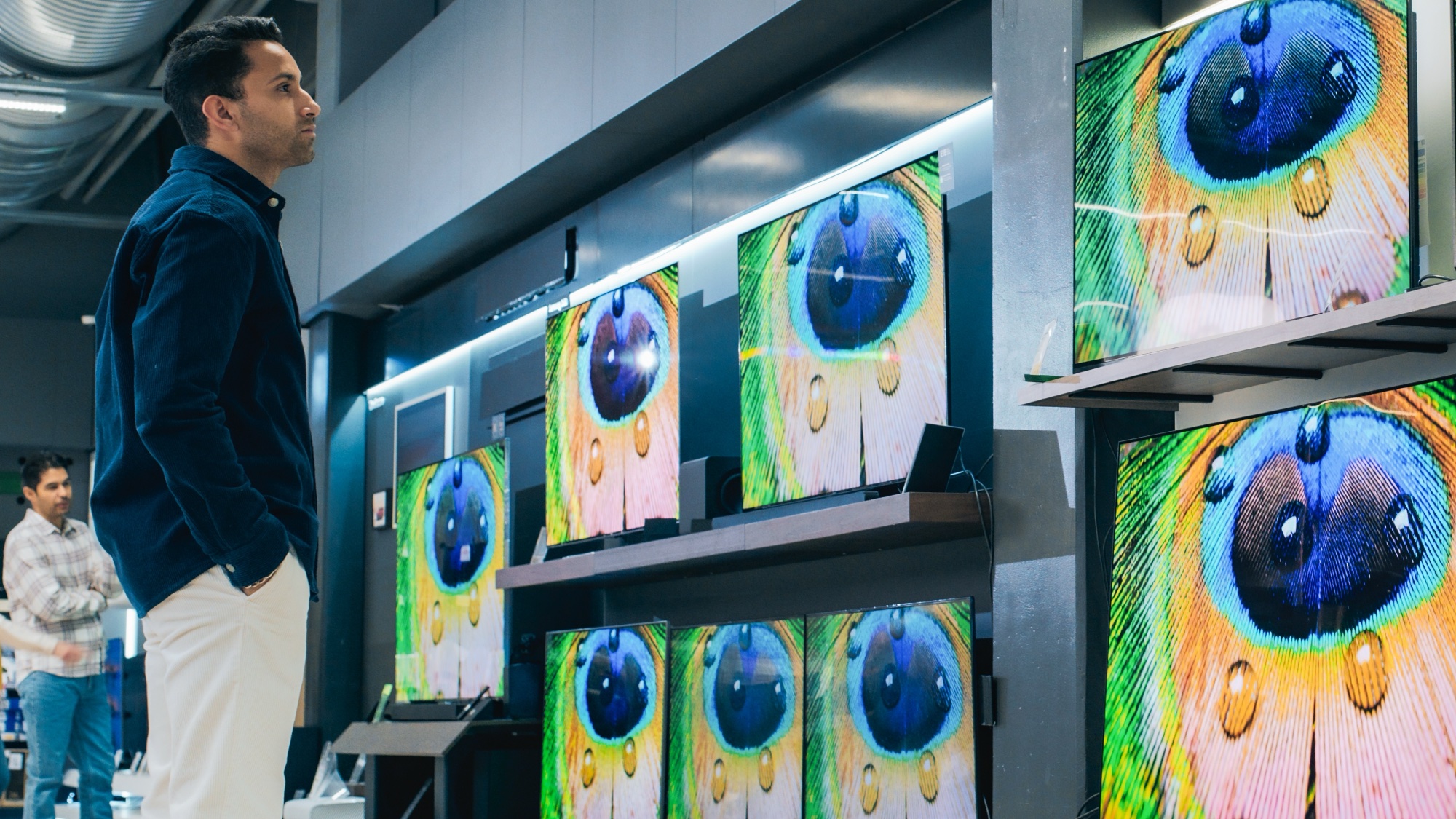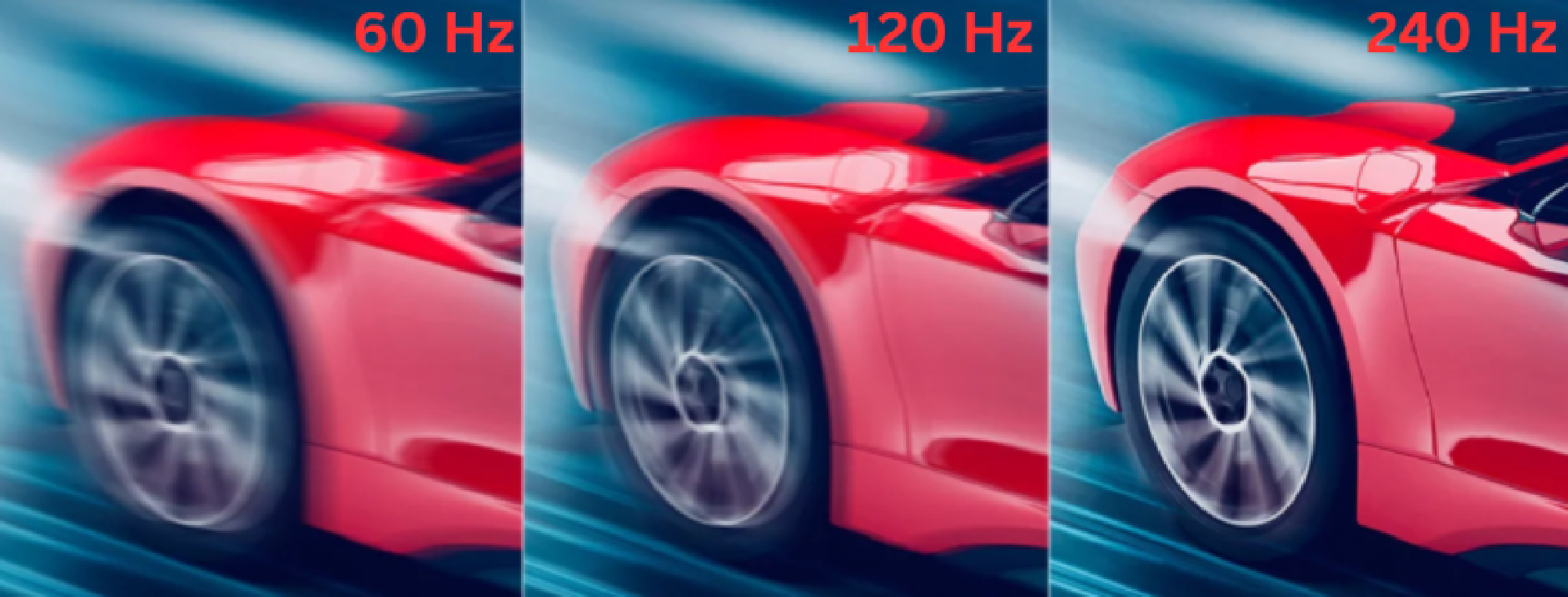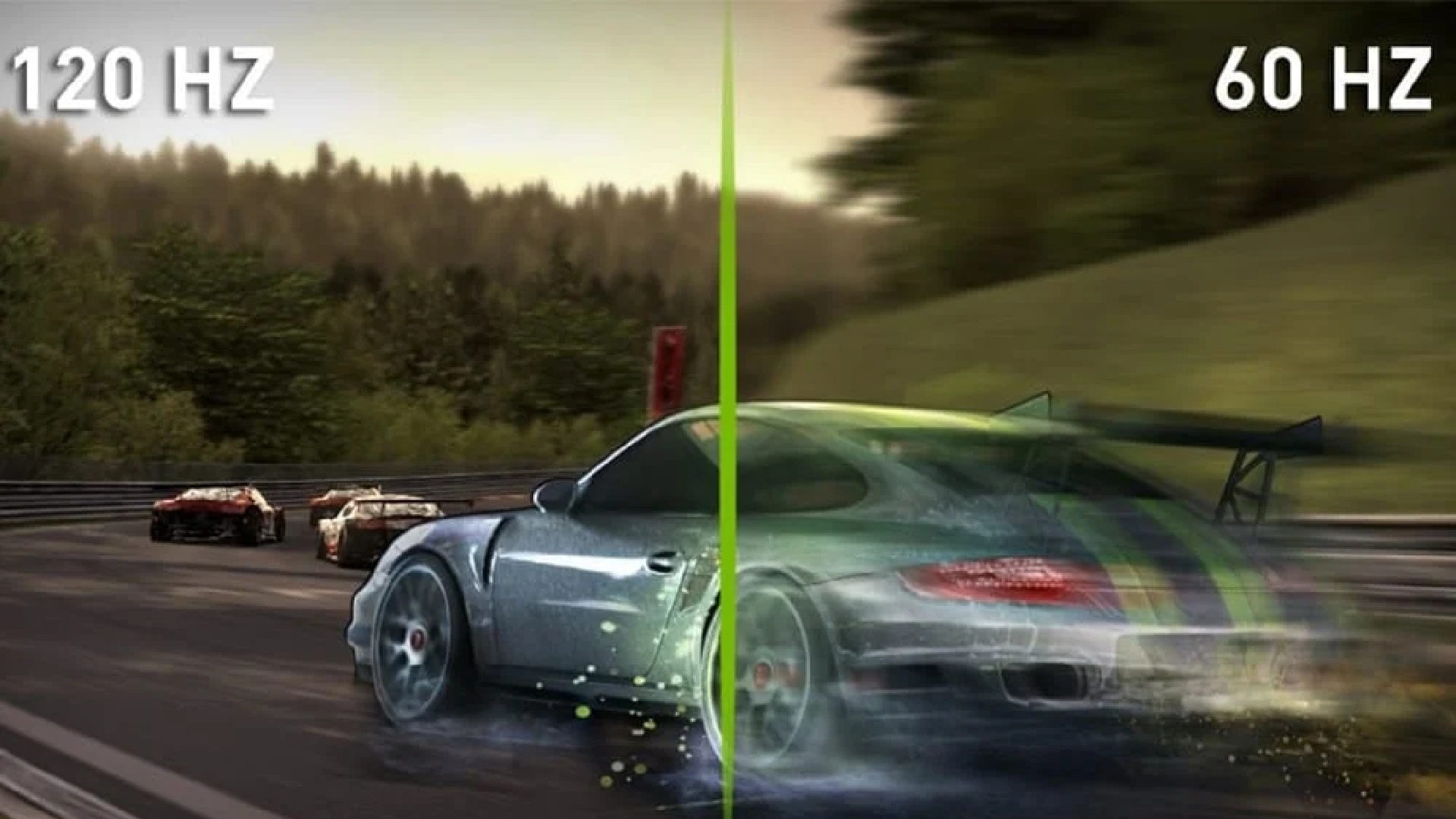
In recent years, TV refresh rates have gone up. As an A/V enthusiast and gamer, I'm ready for them to go up even higher.
For TVs, having a higher refresh rate would ensure that sports, action-packed movie sequences, and games will look almost as smooth and unblemished as real life.
But how exactly would this look? And, maybe even more importantly, is it really all that necessary to begin with? In my opinion, it’s about time we take HFR to heart and implement higher refresh rates on TVs heading into 2025.
Refresh rate and HFR: what they are and why they matter

Before we can fully dive into the world of higher refresh rates, let's get to the bottom of what a refresh rate is and what it means for your living room.
A TV’s refresh rate pertains to the amount of times per second it can draw a new image, which means a 60Hz TV is capable of refreshing an image 60 times per second, 120Hz can deliver 120 frames per second, etc.
For a while, TVs came equipped with a refresh rate of either 60Hz or 120Hz, with the latter being the best you could get. Then 144Hz came into play.
This era began back in 2022 thanks, in part, to Samsung. The Samsung S95B QD-OLED TV is quoted as the world’s first OLED TV to support 4K resolution at a 144Hz refresh rate. TVs were beginning to move further into the world of High Frame Rate (HFR).
HFR is championed by a small (but vocal) group of people, most of whom are gamers. Many people might already have a rocky relationship with HFR without knowing it. Most of the disdain comes from the "soap opera effect" of movies like Peter Jackson’s “Hobbit” trilogy or "Avatar," which were presented in HFR across the county.
But while moviegoing audiences might not be ready for HFR on the big screen, it could have broader implications for our living rooms. Higher frame rates means a smoother, cleaner picture during fast-paced content. Higher frames on TVs would be most beneficial for sports and action sequences, giving NASCAR races, football games, and James Bond movies an air of added realism. Why not add a little more juice to the Olympic games?
HFR could one day prove a worthwhile upgrade across the board, but it's unsurprising that its biggest advocates are gamers. In fact, I think the next generation of displays should go all-in on higher refresh rates for gaming alone.
HFR and the future of gaming

Higher refresh rates are generally better for gamers.
Modern gaming monitors are now hitting incredible highs in refresh rate performance, but a majority of the player base on TVs use a modern console, like the PS5 or Xbox Series X. These consoles cap out at 4K/60Hz or 4K/120Hz (depending on what your TV supports), but with one of the best gaming PCs, you have a bit more freedom in how many frames you can eke out in a particular game.
The key distinction is that most gaming is played in 1080p resolution or lower, as even some of the best gaming PCs can’t handle 4K output at a smooth-enough clip. But, as already mentioned, refresh rate isn’t entirely dedicated to the gaming capabilities of a particular display. Higher refresh rates would not only give PC gamers added control over how they experience their games, but give creators more options in how their content is experienced.
One of the ways higher refresh rates on TVs can give creators more freedom is in wider adoption of specific technologies, like Quick Media Switching. It’s a niche concept, but essentially allows a TV or device to play a particular show or sports broadcast that has multiple refresh rates without a 2-3 second blackout period.
But if it's so easy to see a future where higher frame rate gaming finds its way into our living rooms, why isn't it here yet?
Higher refresh rates on TVs: what's the hold-up?
There are several limitations to TVs adopting higher refresh rates, and it starts with costs. TVs of this nature would be incredibly expensive and would most likely be situated at the top of most brands' lineups, making them rather hard to acquire for the average consumer.
Right now, the Samsung QN900D is one of the only TVs in existence that supports a 4K 240Hz refresh rate thanks to its onboard video processor and its 8K resolution. Unfortunately, it’s not so easily leveraged. To actually tap into this higher spec, you would need a source device that supports a 4K/240Hz refresh rate signal, specifically one with Display Stream Compression (DSC), which is found mostly on Apple silicon and Nvidia’s RTX 4080 and 4090 GPUs.
Which also brings us to our next issue: the availability of HFR content. Simply put, there's not a lot to choose from.
But that doesn't mean we should give up on these possibilities.
I think it's important to give gamers and creators the freedom push the envelope. Going up to at least 240Hz on displays would give game developers much more wiggle room. It would also give sports an entirely new look and feel, adding depth and immersion.
Until then, I'll continue to dream in HFR.
More from Tom's Guide
Sign up to get the BEST of Tom's Guide direct to your inbox.
Get instant access to breaking news, the hottest reviews, great deals and helpful tips.

Ryan Epps is a Staff Writer under the TV/AV section at Tom's Guide focusing on TVs and projectors. When not researching PHOLEDs and writing about the next major innovation in the projector space, he's consuming random anime from the 90's, playing Dark Souls 3 again, or reading yet another Haruki Murakami novel.
